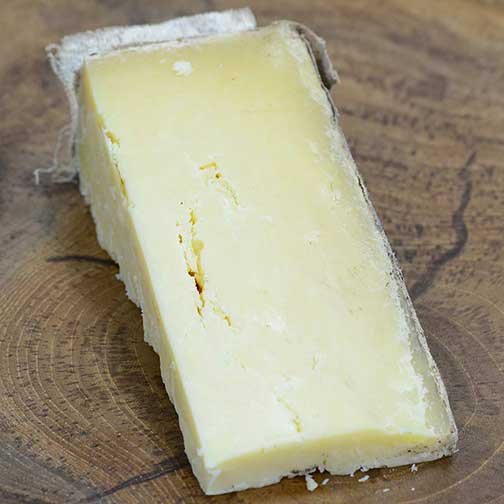Montgomery’s Farmhouse Cheddar
pleasant earthy flavor — rich & nutty — notes of mushroom & beef broth — long finish
history of the cheese
Somerset, England is the original home of Cheddar cheese. The damp climate ensures lush pastures, resulting in rich milk. Unlike certain products of Europe, cheddar isn’t protected under the EU or UK law so anybody anywhere can produce a cheddar. But nobody makes Cheddar like the English — except for our favorite Willie Lehner of Bluemont Cheddar. Shh. Don’t tell the English.
In 1911, Sir Archibald Langman purchased a family farm in Somerset, England and began producing cheddars. The family kept raw milk cheese-making alive, even during the World Wars where small producers were forced to sell their creameries to larger manufacturers. He then passed the art of cheese-making down to his daughter, Elizabeth, and she passed it along to her son, Jamie Montgomery.
The family still makes this cheese from the milk of their 140 Holstein-Friesian dairy cows — the classic black and white breed. This is one of three farms in England that make traditional English Cheddar. P.S These cows graze on a hill rumored to be the site of Camelot!
how it’s made
Steve Bridges makes the cheese every day to ensure it’s produced using the finest ingredients and no milk is wasted. They still use the original starter cultures, but use a different culture every day, naming the cheeses by the days of the week - i.e Monday. The cheese changes from batch to batch, depending on the cows, the season, and the culture.
The curds are cheddared by hand, a traditional process by which the texture of the curds are changed from crumbles to pliable, elastic slabs. They’re then stacked on top of each other to release the excess whey. As they rest, they’re rotated so each slab has the benefit of being on the bottom of the stack. After resting, the curd is milled into smaller pieces and is formed into wheels to release whey. The result is a drier and crumblier cheese.
The Cheddar is then wrapped in muslin cloth and rubbed with lard before they age for at least 11 months. Cloth-bound cheddars benefit from being wrapped so they can mature and breathe to develop complex flavors as they age.
to serve
Pull out to room temperature at least an hour before serving. Serve simply with crusty bread & butter; rye crisps, mustard & cornichons; or with crackers and apple chutney. Pair with an EPA, Pinot Noir, or a funky cider.

